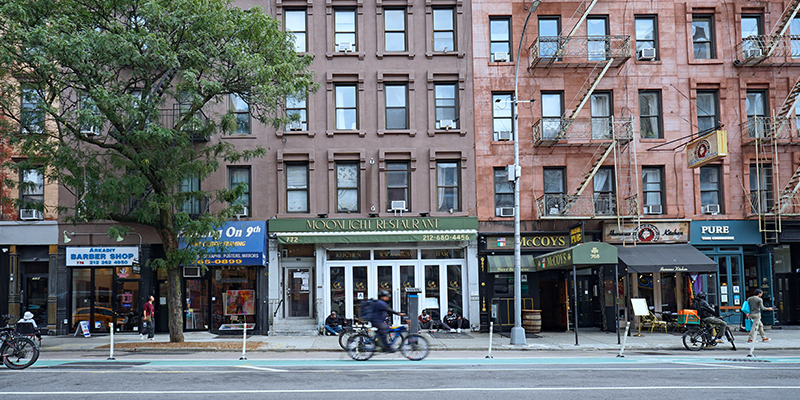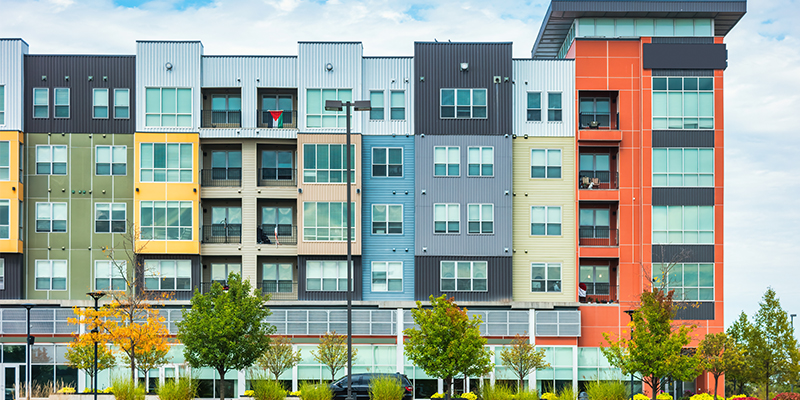A panel of construction and design experts took to the stage at NAIOP’s I.CON West: The Industrial Conference this week in Long Beach, California, to answer the big questions surrounding materials cost, procurement and shortages, supply chain challenges and solutions, and offering their outlooks on how to best navigate industrial construction and design challenges in the COVID-19 era.
The panel, moderated by Brian Knochenhauer, senior vice president client lead development, Prologis, posed a series of questions to panelists Bryan Custer, project executive, FCL Builders; Kevin Evernham, principal, Ware Malcomb; Teresa Goodwin, AIA, regional director, HPA Inc.; and Guy Martin, president, Martin-Harris Construction.
Knochenhauer began by polling the audience on current delivery lead times for industrial project essentials of roofing materials, electrical gear and dock levelers, with each audience response estimating an average of 9-12 months. Typical for today, but far beyond the norm pre-pandemic.
The panelists said that typical design modifications right now are created by supply chain delays, resulting in clients making modifications to types of roofs or trusses. “It’s important to have alignment between the developer, design team, structural engineers and contractors. Without it, you waste a lot of time and eat up your savings,” said Evernham.
“About nine months ago, we realized delays were going to be extensive,” said Goodwin. “Our structural engineers started drawing up all sorts of solutions, but a key shift that we’ve seen is developers securing steel early, getting orders in for roofing even before planning is approved.”
“A lot depends on what is most important to the end user,” said Martin. “Is it innovation or time to market? Time or money? What we’re seeing is to design it, oversize it, and get in line early.”
A push toward sustainability has architects and builders looking at alternative designs, particularly considering glulam beams that are expensive but a more sustainable option. “It’s important to remember that you can’t change to a glulam beam roof without thinking about all of the other elements it changes, like sprinkler systems,” said Goodwin. “This type of change has to be considered in early pricing and design so you can see the whole picture.”
Developers have been increasingly developing on spec to avoid delays, then leasing the space after design and construction are underway. “Prebuying is more acceptable today, while it would have been previously considered a risky choice,” said Evernham.
“We’re seeing a redesign of the typical spec project, adding lighting earlier to the cold, dark shell and looking at power systems and how much can be in as soon as possible,” said Goodwin, noting that dock levelers and common tenant improvements are going in on spec so that a building is move-in ready and expandable.
How has this rapid change affected the developer and contractor relationship? Martin says he finds his team in a counselor role, offering advice on everything from roof structures to cement powders, and Custer said that developers are making sure they have an early spot in production by pre-ordering big purchases like roofing systems in advance and then handing off the information to the contractor, ensuring a building can be delivered on time.
None of the panelists have seen projects being canceled due to cost increases, although all say some of them have seen timelines pushed or a change in materials. “Everybody is just calling audibles,” said Martin. “When something happens to an entire industry, everybody gets to course correct. That’s why these types of increases and delays are tolerable right now.”
Looking ahead, the panelists say to watch for subtle changes and pivots that could trigger bigger challenges, particularly related to labor. “Four things have always controlled construction in my view: the cost of labor, cost of dirt, cost of money and the cost of goods. One of the four can be out of control, but not all four,” said Martin. “I’m watching for the line where rent increases and the cost of construction collide. This is where the problem will emerge. As long as rents can keep up with the cost to build, it’s solid.”
Will pricing level off or return to pre-pandemic levels? Martin says the pandemic deleted stockpiles of materials, so as the supply chain catches up and stockpiles are replenished, costs could level off. “It never returns to where we thought it would,” said Custer. “There are constant upticks to pricing, so it will drop but not to pre-pandemic levels.”
This post is brought to you by JLL, the social media and conference blog sponsor of NAIOP’s I.CON West 2022. Learn more about JLL at www.us.jll.com or www.jll.ca.









